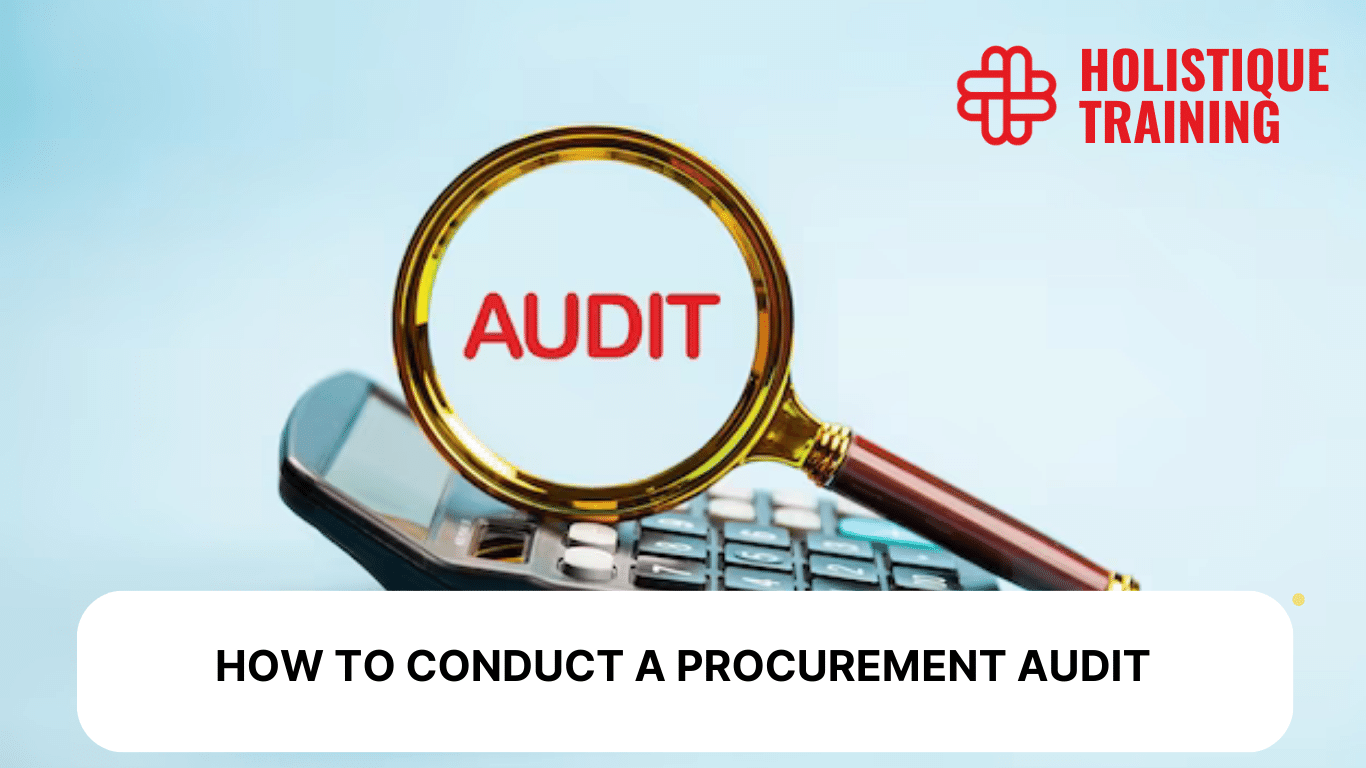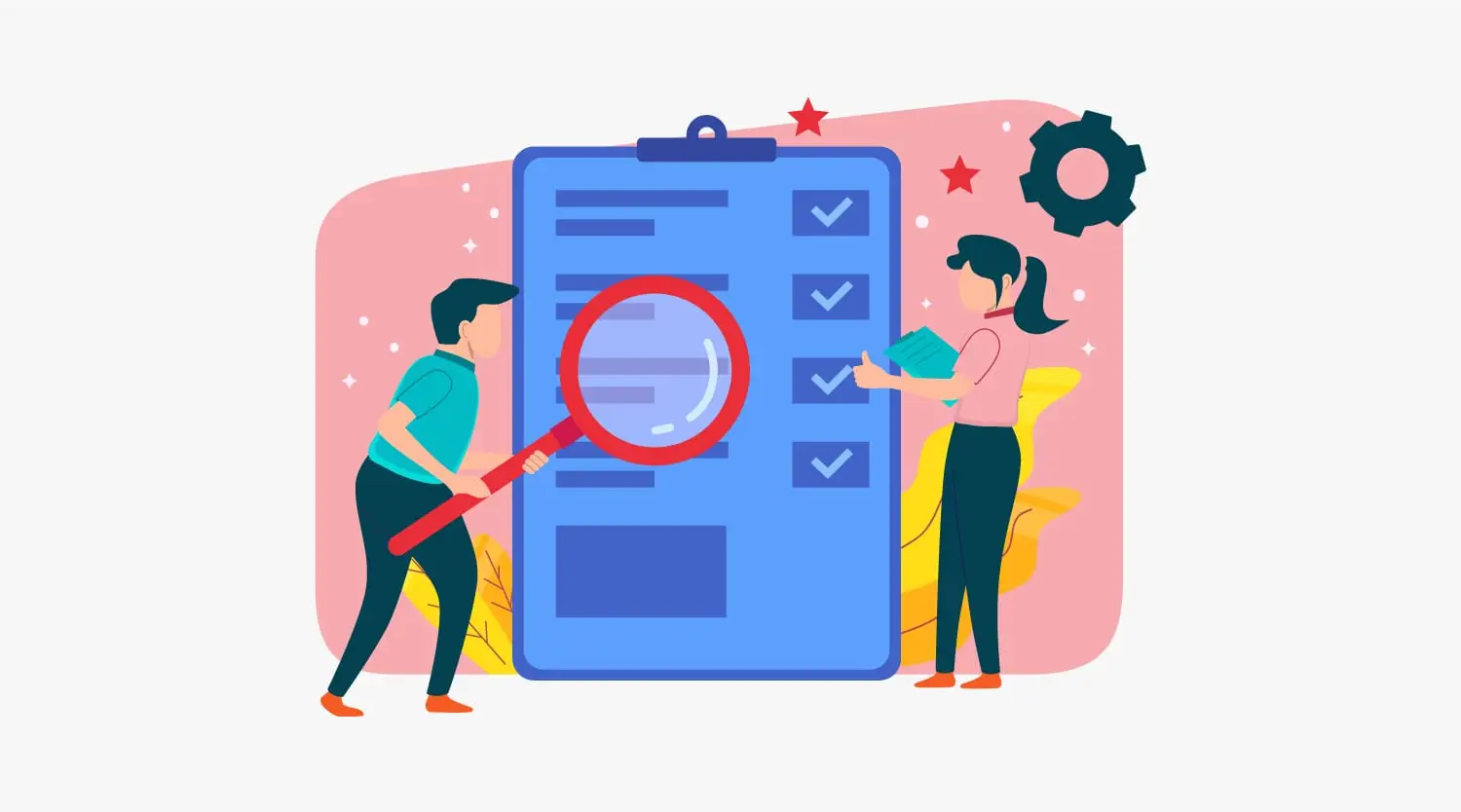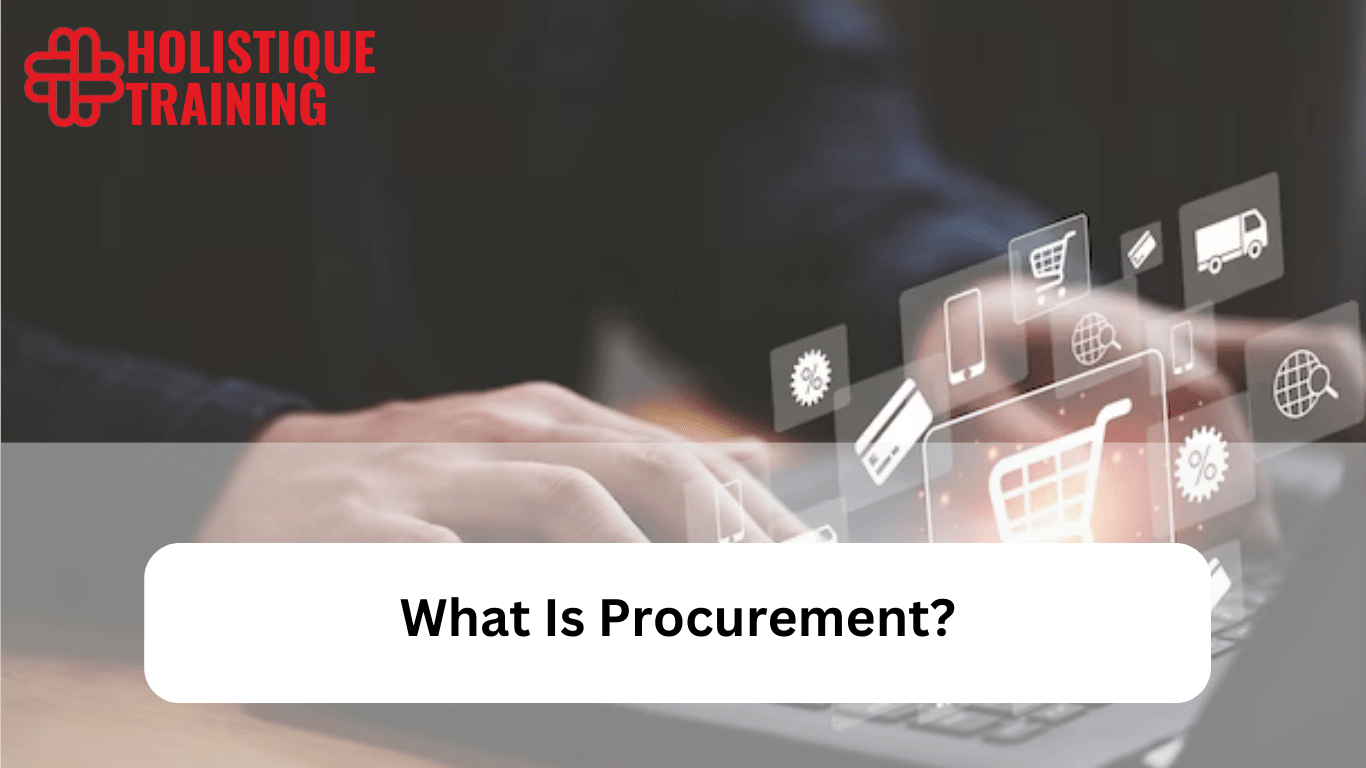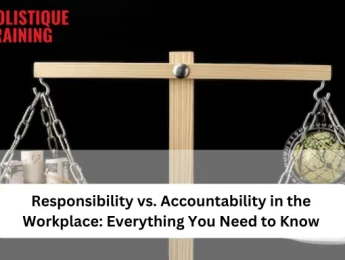Significance of Procurement Audit in Procurement Management
How to Conduct a Procurement Audit in 7 Steps
Challenges of Running a Procurement Audit & How to Overcome Them
Tips & Best Practices for Running a Procurement Audit
Tools & Software You Can Use to Make the Process Easier
Introduction
Procurement is the backbone of any organisation's operations, ensuring that essential resources are acquired efficiently and cost-effectively. To maintain a competitive edge and safeguard against potential risks, it's essential to conduct periodic procurement audits. In this comprehensive guide, we'll delve deep into the world of procurement audits, exploring their significance, advantages, challenges, and the step-by-step process to execute a successful audit. Additionally, we'll provide you with a valuable procurement audit checklist and recommend useful tools and software to streamline the process.
What Is a Procurement Audit?
A procurement audit is a comprehensive and systematic review and assessment of an organisation's procurement processes, policies, and activities. It serves as a critical tool in the arsenal of modern business management, playing a pivotal role in optimising an organisation's procurement function. To truly understand the significance of a procurement audit, let's break down its key components and explore its multifaceted role in today's complex business landscape.
A Holistic Examination
At its core, a procurement audit is not just about crunching numbers and reviewing contracts; it's a holistic examination that delves deep into the inner workings of an organisation's procurement ecosystem. This examination encompasses a wide array of elements, including:
1. Procurement Policies and Procedures
One of the fundamental aspects of a procurement audit is the evaluation of an organisation's procurement policies and procedures. This involves a meticulous review of the documented processes that govern how an organisation acquires goods and services. Are these policies aligned with industry best practices and regulatory requirements? Are there gaps or areas in need of improvement? The audit aims to provide answers to these critical questions.
2. Supplier Relationships
Effective procurement is not just about transactions; it's about building and nurturing valuable supplier relationships. Procurement audits scrutinise these relationships to assess their strength and value. Are suppliers reliable and consistent in delivering quality goods and services? Are there opportunities for collaboration and negotiation to secure better terms and pricing? The audit seeks to uncover areas where these relationships can be enhanced for mutual benefit.
3. Contract Management
Contracts are the backbone of procurement, outlining the terms and conditions that govern transactions. A procurement audit scrutinises these contracts to ensure compliance, accuracy, and completeness. It identifies any deviations from agreed-upon terms, potential risks, and opportunities for optimisation. Effective contract management is crucial in mitigating disputes and ensuring the organisation gets what it pays for.
4. Financial Controls
Financial integrity is paramount in procurement. The audit closely examines financial controls within the procurement function to detect any irregularities or instances of fraud. It ensures that financial transactions related to procurement are transparent, accountable, and in line with established guidelines. By doing so, the audit mitigates financial risks and safeguards the organisation's resources.
5. Data Accuracy and Completeness
In the age of data-driven decision-making, the accuracy and completeness of procurement data are of utmost importance. The audit verifies the integrity of data related to purchases, vendor performance, and cost analysis. This data serves as the foundation for strategic insights and informed decision-making. Inaccurate or incomplete data can lead to misguided decisions and missed opportunities.
The Proactive Approach
A distinguishing feature of a procurement audit is its proactive nature. Rather than waiting for issues to arise and reactively addressing them, the audit anticipates potential challenges and shortcomings. It's a forward-looking process that aims to identify inefficiencies, non-compliance, and improvement opportunities before they impact the organisation's bottom line.
By taking this proactive stance, organisations can not only rectify existing problems but also prevent future issues from arising. This approach is akin to preventative medicine; it helps an organisation stay healthy and resilient in the face of procurement-related challenges.
The Bigger Picture
While a procurement audit certainly serves the immediate goal of improving procurement processes, its significance extends to the broader organisational landscape. Here are a few ways in which a procurement audit impacts the bigger picture:
1. Strategic Alignment
Procurement is not an isolated function; it's a strategic driver of an organisation's success. By ensuring that procurement aligns with the organisation's objectives, the audit helps steer the ship in the right direction. It ensures that procurement activities are in sync with the larger strategy, contributing to the achievement of strategic goals.
2. Risk Mitigation
In today's complex business environment, risks abound. Procurement audits are instrumental in identifying and mitigating these risks. Whether it's compliance issues, supplier-related risks, or financial vulnerabilities, the audit acts as a shield, protecting the organisation from potential harm.
3. Competitive Edge
Efficient procurement processes can give an organisation a significant competitive edge. By optimising procurement through audits, organisations can reduce costs, improve quality, and respond more quickly to market changes. This enhanced agility can make the difference between success and obsolescence in today's fast-paced business world.
In summary, a procurement audit is not just a routine check; it's a strategic imperative. It's a proactive, holistic, and forward-looking process that safeguards an organisation's financial health, enhances its competitive position, and ensures that procurement functions as a strategic asset rather than a mere administrative task. To thrive in today's business landscape, organisations must recognise the profound significance of procurement audits and make them an integral part of their management toolkit.
Significance of Procurement Audit in Procurement Management
In the intricate tapestry of modern business operations, procurement plays a pivotal role. It serves as the gateway through which an organisation obtains the essential resources required for its survival and growth. To ensure that this gateway functions efficiently and effectively, organisations turn to procurement management, and at the heart of this management approach lies the significance of a procurement audit. Let's delve deeper into why a procurement audit is so crucial within the realm of procurement management.
Ensuring Alignment with Strategic Goals
One of the primary responsibilities of procurement management is to ensure that every procurement activity aligns seamlessly with the overarching strategic goals of the organisation. This alignment is essential for the following reasons:
a. Resource Optimisation
Strategic alignment ensures that the organisation allocates its resources judiciously. It prevents the misallocation of funds, reducing the risk of overspending or investing in areas that do not contribute to the strategic vision.
b. Risk Mitigation
When procurement activities are in sync with the organisation's strategy, the risk of unintended consequences decreases. Compliance with strategic goals helps avoid ventures that could lead to financial or reputational damage.
c. Fostering Innovation
Alignment with strategic goals encourages procurement teams to seek innovative solutions that can drive the organisation forward. It encourages them to explore new technologies, sustainable practices, and cost-effective strategies that align with the long-term vision.
d. Accountability and Transparency
A well-defined strategic alignment in procurement activities enhances accountability and transparency. Stakeholders can easily trace how procurement decisions contribute to the achievement of strategic objectives, ensuring that resources are used effectively and ethically.
Safeguarding Against Risks
Effective procurement management is not just about achieving strategic goals; it's also about safeguarding the organisation against a multitude of risks. A procurement audit plays a pivotal role in this risk management process:
a. Fraud Prevention
Fraudulent activities can be a significant risk in procurement. Whether it's through collusion, bribery, or other dishonest practices, organisations can lose substantial resources. Procurement audits help detect and prevent such fraudulent activities by thoroughly reviewing financial transactions, vendor relationships, and procurement records.
b. Compliance Assurance
In today's regulatory environment, non-compliance with laws and regulations can result in severe legal and financial repercussions. Procurement audits ensure that an organisation's procurement practices adhere to all relevant regulations, reducing the risk of costly legal actions.
c. Supplier Reliability
Supplier-related risks are a constant concern in procurement management. A single unreliable supplier can disrupt the entire supply chain. A procurement audit evaluates supplier performance, helping identify potential risks and opportunities for improvement in supplier relationships.
Enhancing Efficiency and Effectiveness
Procurement management aims to make the procurement process as efficient and effective as possible. Here's how a procurement audit contributes to this objective:
a. Cost Efficiency
Cost savings are a prime focus of procurement management. A procurement audit identifies areas of inefficiency, waste, or unnecessary expenditure. By optimising procurement processes and negotiating better terms with suppliers, organisations can realise substantial cost savings.
b. Process Streamlining
Procurement audits pinpoint bottlenecks and redundancies within procurement processes. By streamlining these processes, organisations can reduce lead times and improve overall efficiency. This agility in procurement can be a competitive advantage in dynamic markets.
c. Data-Driven Decision-Making
In the era of big data, organisations rely on data-driven decision-making. A procurement audit ensures the accuracy and completeness of procurement data, providing a reliable foundation for strategic decisions. It empowers organisations to make informed choices based on historical performance and future trends.
Demonstrating Commitment to Excellence
Finally, a procurement audit is a tangible demonstration of an organisation's commitment to excellence in procurement practices. This commitment has far-reaching benefits:
a. Stakeholder Confidence
Stakeholders, including investors, customers, and employees, place great importance on ethical and efficient procurement practices. A robust procurement audit can bolster stakeholder confidence by showcasing the organisation's dedication to responsible and transparent procurement.
b. Competitive Edge
Organisations that consistently practise excellence in procurement management gain a competitive edge. They are better equipped to respond to market changes, seize opportunities, and weather economic challenges.
c. Continuous Improvement
A procurement audit is not a one-time event but rather a continuous process. Organisations that embrace this philosophy of continuous improvement are more likely to adapt to evolving market conditions and emerging procurement best practices.
In essence, the significance of a procurement audit in procurement management cannot be overstated. It serves as the guardian of strategic alignment, the shield against risks, the engine of efficiency, and the flagbearer of excellence. In an increasingly complex and competitive business landscape, organisations that recognise and harness the power of procurement audits position themselves for sustained success and resilience.
How to Conduct a Procurement Audit in 7 Steps
A successful procurement audit requires careful planning, meticulous execution, and a keen eye for detail. It's a structured process that involves evaluating various aspects of an organisation's procurement function. Here, we will elaborate on each of the seven essential steps involved in conducting a procurement audit.
Step 1: Establish Clear Objectives
Objective Setting is Crucial: The foundation of a successful procurement audit lies in establishing clear objectives. These objectives should outline what you aim to achieve through the audit and the specific areas you intend to focus on. Consider the following points when setting your objectives:
Scope Definition: Clearly define the audit's scope to avoid ambiguity. Determine which aspects of procurement will be examined, such as procurement policies, supplier relationships, contract management, and financial controls.
Alignment with Goals: Ensure that the audit objectives align with the organisation's broader goals and strategic objectives. This alignment ensures that the audit serves a purpose beyond mere compliance.
Risk Assessment: Consider potential risks and challenges within the procurement function. Objectives should address areas where risks are highest, such as compliance or cost inefficiencies.
Specificity and Measurability: Make your objectives specific and measurable. This enables you to track progress and determine the success of the audit.
Step 2: Assemble the Audit Team
The Right Expertise: Forming an audit team with the right expertise is critical for a comprehensive evaluation. The team should comprise individuals with diverse skill sets, including procurement specialists, financial experts, and compliance professionals. Here's what you should consider:
Roles and Responsibilities: Assign specific roles and responsibilities to each team member. This ensures accountability and a well-organised audit process.
Independence and Objectivity: Maintain the independence and objectivity of the audit team. External auditors or consultants can provide an impartial assessment of your procurement function.
Training and Familiarity: Ensure that team members are well-versed in procurement practices, audit methodologies, and any specific tools or software to be used during the audit.
Step 3: Gather Documentation
Documentation is Key: The procurement audit heavily relies on documentation. Gathering all relevant procurement records, contracts, invoices, purchase orders, vendor agreements, and any other pertinent documents is a crucial step. Consider these points:
Data Accuracy: Verify the accuracy and completeness of the documentation. Inaccurate or incomplete records can lead to misleading audit findings.
Organisation and Accessibility: Maintain a well-organised repository for procurement documents, making them easily accessible to the audit team. This ensures efficiency during the audit process.
Digitalisation: Consider digital document management systems for ease of access, version control, and security.
Step 4: Review Policies and Procedures
Evaluating Policies and Procedures: This step involves a detailed review of your organisation's procurement policies and procedures. It's essential to assess whether these policies align with industry best practices and regulatory requirements. Consider the following:
Benchmarking: Compare your procurement policies with industry benchmarks and best practices. Identify gaps and areas needing improvement.
Regulatory Compliance: Ensure that your policies and procedures comply with all relevant laws and regulations, such as procurement laws, environmental regulations, and ethical standards.
Documentation of Changes: If changes are required, document them clearly for implementation after the audit.
Step 5: Conduct Interviews and Surveys
Engage Key Stakeholders: Interviews and surveys are vital for gathering insights and feedback from key stakeholders involved in the procurement process. These stakeholders may include procurement staff, suppliers, and finance personnel. Points to consider:
Open Communication: Foster open communication with stakeholders, encouraging them to share their experiences, insights, and concerns. This can uncover issues not evident in documentation alone.
Structured Surveys: Use structured surveys to gather quantitative data and feedback. Online survey platforms like SurveyMonkey or Google Forms can streamline this process.
Feedback Analysis: Thoroughly analyse the data collected from interviews and surveys. Look for recurring themes, concerns, or areas where stakeholders believe improvements are needed.
Step 6: Data Analysis
Leveraging Data Analytics: Data analysis is a critical aspect of the audit, allowing you to identify trends, anomalies, and potential issues within your procurement function. Consider the following:
Data Analytics Tools: Utilise data analytics tools and software such as Tableau, Power BI, or QlikView to streamline the data analysis process. These tools can handle large datasets efficiently.
Pattern Recognition: Look for patterns in procurement data that may indicate inefficiencies, discrepancies, or areas requiring further investigation.
Anomaly Detection: Use data analytics to detect anomalies or irregularities in procurement transactions, which may be indicative of fraud or compliance issues.
Step 7: Report and Recommendations
Compiling Findings and Recommendations: The final step of the procurement audit involves compiling your findings into a comprehensive report. This report should include actionable recommendations for process improvement, risk mitigation, and policy enhancements. Key considerations:
Clarity and Transparency: Ensure that the audit report is clear, well-structured, and easy to understand for all stakeholders.
Prioritisation: Prioritise recommendations based on their impact and feasibility, allowing for a phased approach to implementation.
Presentation to Management: Present the audit report to senior management for their review, approval, and guidance on implementation.
By following these seven comprehensive steps, your organisation can execute a successful procurement audit. This structured approach helps identify areas for improvement, enhance compliance, and optimise procurement practices, ultimately contributing to cost savings, risk mitigation, and improved overall performance.
Challenges of Running a Procurement Audit & How to Overcome Them
While the benefits of conducting a procurement audit are significant, it's essential to acknowledge the challenges that can arise during the process. Recognising and addressing these challenges is crucial for a successful audit outcome. Let's explore these challenges in-depth and discuss strategies to overcome them.
1. Resistance to Change
Resistance from employees who fear that the audit will disrupt their workflow and daily routines is a common challenge. Procurement teams and staff may view the audit as intrusive or burdensome.
To mitigate resistance to change:
Effective Communication: Clearly communicate the purpose and objectives of the audit. Emphasise that the audit aims to improve processes, not to assign blame.
Engagement and Involvement: Involve procurement staff and key stakeholders in the audit process. Encourage them to share their insights, concerns, and suggestions.
Training and Education: Provide training on the audit process and its benefits. Help staff understand how the audit can enhance their work rather than disrupt it.
2. Data Complexity
Managing and analysing vast amounts of procurement data can be daunting. Data can be spread across various systems, formats, and sources, making it challenging to consolidate and analyse effectively.
To address data complexity:
Data Analytics Tools: Invest in data analytics tools and software that can handle large datasets efficiently. Tools like Tableau, Power BI, or QlikView can assist in data consolidation and analysis.
Data Quality Assurance: Prioritise data accuracy and completeness. Implement data quality assurance measures to ensure that the data used for the audit is reliable and error-free.
Data Integration: Explore data integration solutions to streamline data from disparate sources into a centralised repository for analysis.
3. Resource Constraints
Limited time and resources for conducting the audit can pose a significant challenge. Procurement audits require dedicated personnel, time, and financial resources.
To address resource constraints:
Prioritisation: Identify critical areas for audit focus based on their potential impact on the organisation. Allocate resources accordingly to prioritise high-impact improvements.
Phased Approach: Consider conducting the audit in phases if resource constraints are severe. Begin with the most critical areas and expand the audit scope as resources become available.
External Assistance: If internal resources are insufficient, engage an external auditor or consultant with expertise in procurement audits. They can provide valuable insights and perform an impartial assessment.
4. Compliance Issues
Identifying and addressing compliance issues can be complex due to the ever-changing regulatory landscape. Navigating legal and compliance requirements can be challenging for audit teams.
To navigate compliance challenges:
Legal Expertise: Collaborate with legal and compliance experts within or outside your organisation to ensure that audit findings align with legal requirements.
Regular Updates: Keep procurement policies and procedures up to date with changing regulations. Regularly review and revise them to maintain compliance.
Continuous Monitoring: Implement continuous monitoring and auditing processes to address compliance issues in real-time rather than waiting for periodic audits.
By acknowledging and proactively addressing these challenges, organisations can conduct more effective procurement audits. These strategies enhance the audit's success while minimising disruptions and maximising the benefits of improved procurement processes, risk mitigation, and compliance.
Tips & Best Practices for Running a Procurement Audit
Running a procurement audit effectively involves more than just following a checklist. It requires a strategic and thoughtful approach. Here, we'll delve deeper into each best practice, providing additional details to help you navigate the complexities of a procurement audit.
1. Foster Open Communication with Procurement Staff
Open communication is not only about encouraging feedback but also about creating a culture where employees feel safe sharing their concerns and insights. Establish regular channels for communication, such as team meetings or suggestion boxes, and ensure that feedback is acted upon promptly. Recognise and reward employees who actively contribute to the audit process, reinforcing the importance of their involvement.
2. Regularly Update Procurement Policies and Procedures
Regular updates should be based on a combination of factors, including changes in regulations, lessons learned from previous audits, and emerging best practices. Consider forming a cross-functional team, including legal and compliance experts, to review and revise policies. Additionally, document the rationale behind policy changes to provide transparency and clarity to all stakeholders.
3. Maintain a Centralised Repository for Procurement Documentation
A centralised repository should be user-friendly and secure. Implement document management systems that not only store documents but also facilitate easy retrieval and version control. Ensure that proper access controls are in place to protect sensitive information. Regularly audit and update the repository to ensure it remains organised and accessible.
4. Implement Continuous Monitoring and Auditing
Continuous monitoring involves real-time tracking of key procurement metrics and performance indicators. It's an ongoing process that enables immediate corrective actions when issues arise. Additionally, consider implementing automated alerts and notifications for critical events, such as deviations from procurement policies or sudden cost increases. This proactive approach minimises risks and maximises efficiency.
5. Engage an External Auditor or Consultant
When engaging an external auditor or consultant, choose professionals with extensive experience in procurement audits and a deep understanding of your industry. Ensure that their scope of work aligns with your audit objectives. Collaborate closely with external experts to facilitate knowledge transfer and ensure that their findings and recommendations are effectively integrated into your organisation's procurement practices.
6. Conduct a Risk Assessment
Before initiating the procurement audit, perform a thorough risk assessment. Identify potential risks associated with your organisation's procurement activities, such as supplier reliability, market volatility, or geopolitical factors. Tailor your audit focus to prioritise areas with the highest risk exposure. A risk-based approach ensures that your audit efforts are strategically aligned with mitigating the most critical threats.
7. Implement Data Analytics Throughout the Process
Leverage data analytics not only for data analysis (Step 6) but also as an integral part of the entire audit process. Utilise analytics to identify audit targets, assess compliance in real-time, and continuously monitor key performance indicators. Modern analytics tools can help you detect anomalies, trends, and areas requiring attention, ensuring a more data-driven and proactive approach to the audit.
8. Ensure Cross-Functional Collaboration
Collaboration between different departments is essential for a holistic audit. Engage stakeholders beyond procurement, including finance, legal, IT, and operations teams. Their insights can uncover interdepartmental dependencies and risks that may not be evident within the procurement function alone. Foster a collaborative environment where teams work together to address audit findings and implement improvements collectively.
9. Leverage Technology for Documentation and Reporting
Utilise technology to streamline documentation management and reporting. Implement document management systems that allow for automated document capture, classification, and indexing. Consider using reporting tools that enable customisable and visually engaging reports, making it easier for stakeholders to grasp audit findings. Technology simplifies the audit process, reduces manual efforts, and enhances the clarity of audit outcomes.
10. Establish Key Performance Indicators (KPIs) for Audit Success
Define specific KPIs to measure the success of your procurement audit process. These KPIs should be aligned with the audit objectives and may include metrics such as the percentage of cost savings achieved, the reduction in compliance violations, or the time taken for audit completion. Regularly track and analyse these KPIs to gauge the audit's impact and identify areas for further improvement in subsequent audits.
Table 1: KPIs for Audit Success
By incorporating these additional details into your procurement audit best practices, you'll enhance the effectiveness and impact of your audit process. These practices not only address challenges but also create a framework for continuous improvement and excellence in procurement management.
Tools & Software You Can Use to Make the Process Easier
Streamline your procurement audit with the help of these tools and software:
Data Analytics Tools
Tools like Tableau, Power BI, or QlikView help you analyse procurement data effectively.
Procurement Management Systems
Invest in software like SAP Ariba, Coupa, or Oracle Procurement Cloud for better procurement process management.
Document Management Systems
Tools like SharePoint or DocuWare assist in organising and storing procurement documentation securely.
Survey and Feedback Tools
Use online survey platforms like SurveyMonkey or Google Forms to gather stakeholder feedback.
Table 2: Checklist for a successful procurement audit
Conclusion
In conclusion, conducting a procurement audit is a proactive measure that can yield significant benefits for your organisation. By following the comprehensive steps outlined in this guide, addressing challenges proactively, and leveraging the right tools and software, you can unlock the potential for cost savings, risk mitigation, and improved procurement performance. Embrace the power of procurement audits to strengthen your organisation's competitive edge and financial health.
Frequently Asked Questions(FAQ)
Why is a procurement audit important for organisations?
A procurement audit helps organisations identify inefficiencies, reduce risks, and improve procurement processes, ultimately enhancing financial health and competitiveness.
What steps are essential for conducting a successful procurement audit?
Key steps include setting clear objectives, assembling a skilled audit team, gathering relevant documentation, evaluating policies and procedures, conducting stakeholder interviews, data analysis, and reporting with actionable recommendations.
How can organisations overcome resistance to a procurement audit?
Open communication, clarifying the audit's purpose, and involving procurement staff in the process can mitigate resistance and promote collaboration.
What role does continuous monitoring play in procurement audits?
Continuous monitoring helps organisations address issues in real-time, ensuring that procurement practices remain aligned with objectives and regulations.
Why should organisations consider engaging an external auditor or consultant for procurement audits?
External experts offer an impartial assessment, specialised knowledge, and insights that can enhance the audit's quality and credibility.
























